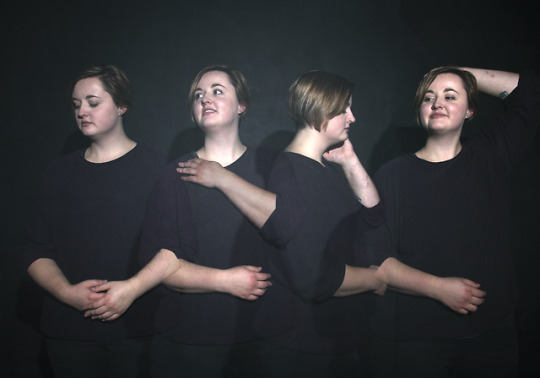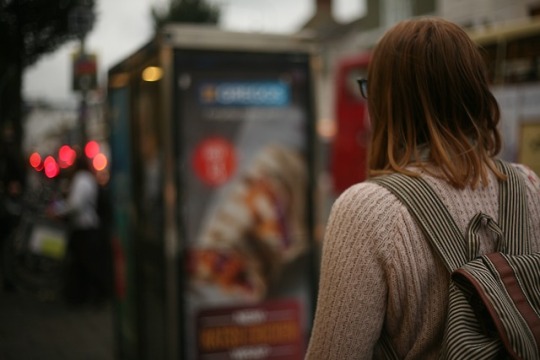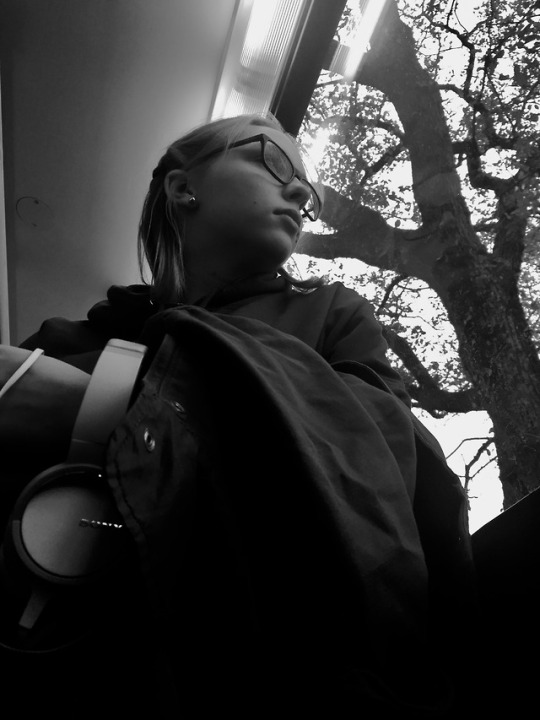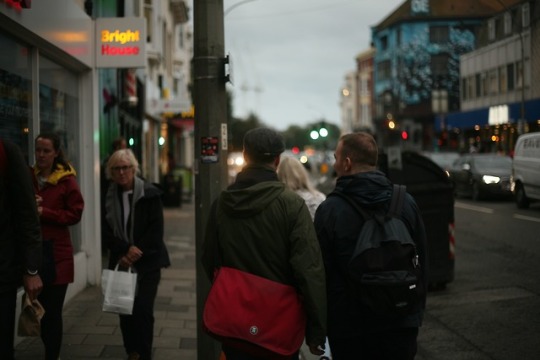Text
The impact of popular music on culture
In todays world, popular music is evolving in style more rapidly than ever before. Looking back at the middle ages, music would remain of the same style for hundreds of years, now society is forced to constantly update their Spotify’s and Apple Music in order to be considered ‘cool’ or ‘popular’.
Songs such as ‘#SELFIE’ and ‘Gangnam Style’ stay in fashion for a matter of weeks, before disappearing into the background with the rest of the ‘one hit wonders’. This puts a great deal of pressure on society as a whole to remain vigilant and keep up with the trends, but how is this impacting one of the most vulnerable groups of people within our society? Teenagers and young people are one of the most pressured groups when it comes to keeping up with popular music, making them susceptible to peer pressure and bullying if they are not able to or do not want to remain current. The teenagers and young people that favour country music, jazz or musical theatre are left by the way side, struggling to fit into a society that is ever changing.
Denisoff, R. (1978). Popular Music & Society: A report. Popular Music and Society, 6(1), pp.1-2.
Ausfamily.org. (2018). Impact of Music Lyrics and Music Videos on Children and Youth - Australian Federation for the Family. [online] Available at: https://www.ausfamily.org/resources/media-influence/impact-of-music-lyrics-and-music-videos-on-children-and-youth [Accessed 25 Nov. 2018].
The impact of makeup on culture
Many people across the world use makeup as a way to feel good about themselves day-to-day, but is this helping or hindering each individual? Personally, at the moment I wear makeup to some extent everyday which makes me feel good about myself and less self-conscious however, when taking off my makeup I begin to feel the way many people feel at this time, ‘ugly’ and ‘ashamed’. There is a perception that women who wear makeup are healthier and earn more money (BARDEY, 2018), subconsciously we are judging each person instantly and we have no control over this, but this can be both positive and negative. Instant judgement can be useful in potentially dangerous or difficult situations however, it can be extremely negative and damaging. Immediately judging someone on there appearance or use of makeup can stop you from getting to know the person who is underneath it or, on the flip side getting to know the person who is bare faced. Makeup can be extremely powerful particularly when used for events such as theatre or Drag, but is keeping up with the Kardashians just too much pressure? Is makeup creating unrealistically high standards for people everywhere.
BARDEY, A. (2018). THE SURPRISING EMOTIONAL BENEFITS OF COSMETICS: Can makeup make consumers feel more attractive and smart?. London: UAL London College of Fashion, Science Department.
Alvarez, M. (2017). The damaging effects of makeup on teens. [online] Fox News. Available at: https://www.foxnews.com/health/the-damaging-effects-of-makeup-on-teens [Accessed 12 Dec. 2018].
What is art?
Art is defined as ‘the expression or application of human creative skill and imagination’ (Oxford Dictionaries | English, 2018), therefore I believe that there should be no set ‘rules’ in creating art. What I regard as expressing myself in a creative manner, the person sitting next to me may not. Marcel Duchamp’s ‘Fountain’ (1917) is the perfect example of the different ways in which people can express themselves. Duchamp took an ordinary urinal and called it ‘Fountain’, placing it in a gallery, I myself would not necessarily call this art however, Ducamp did. Demonstrating the unique divide among individuals daring to ask the question of ‘what is art?’
As a person who hopes to study creative therapies in the future, I believe that ‘art’ whatever it may be and whatever form it may come in, is an extremely powerful tool in healing, it can aid in self expression and communication particularly for people with conditions such as Dementia or Aspergers (Rylatt, 2012). Therefore I would say, why ask the question at all, let each individual judge for themselves and use art to their advantage.
Rylatt, P. (2012). The benefits of creative therapy for people with dementia.. Great Britain, pp.2-3.
Oxford Dictionaries | English. (2018). art | Definition of art in English by Oxford Dictionaries. [online] Available at: https://en.oxforddictionaries.com/definition/art [Accessed 19 Dec. 2018].
0 notes
Photo

This image and the following image are a result of our portrait project, the brief was to capture someone you know in an image that reflects them, their environment or their experiences.
0 notes
Photo

This image is the best of the first shoot I carried out within our self portrait project. I liked this image although technically it is not overly strong, therefore I chose to reshoot, working out the technical aspects such as, the clothing I was wearing, the low light issues and that you could see the corner of the studio.
0 notes
Photo

This is the final image that I chose for this project, I believe that it successfully shows the different sides of myself, whilst also being technically sound. If I were to reshoot this I would continue to try and get the facial expression and arm placements correct, this was challenging as everything had to be coordinated within the 10 second window and in the dark.
0 notes
Photo

This image and the following image are from an ‘In the style of…’ project. I was given Jill Greenberg and looked at creating images ‘In the style of’ her ‘End Times’ work. I chose to research Asperger’s Syndrome in relation to this project, specifically, eye contact being a key element in conveying emotion.
0 notes
Photo

This image was a result of the opportunity to shoot for the props department at Northbrook college. I enjoyed this shoot as the lighting and enthusiastic models made for some interesting images.
0 notes
Photo

I had the opportunity to shoot for the theatre department as part of their end of term showcase. This image is a result of their production of Macbeth.
0 notes
Text
Fiona Tan and Doug Aitken
Fiona Tan’s ‘Rise and Fall’ (Tan, 2010) displays several women carrying out daily tasks, juxtaposed with the natural earth and the associated tones and colours. Tan’s work elegantly depicts the human journey, abstractly telling a narrative. One reviewer stated that ‘they’re like snapshots jumbled in a box instead of finished and framed works of art’ (Gopnik, 2010, p.1). I agree with this statement, Tan’s work represents humans activity and journey however, not in the conventional sense, instead in a way that resembles the disjointed nature of the human memory.
Similarly, Doug Aitken’s ‘Electric Earth’ (Aitken, 1997) portrays the body and the part humans play on earth in an abstract and engaging way. Unlike Fiona Tan’s piece Aitken’s work incorporates and morphs nature, humans and manmade objects within a studio setting. ‘Electric Earth’ displays many powerful pieces of imagery on large scale screens in a large, otherwise empty space, whereas Tan uses natural locations as opposed to studios.
In both Tan and Aitken’s works more than one screen is used throughout the installation, giving the video art an immersive quality, drawing the audience into the piece, making sure that the audience is fully involved with the art. Aitken’s work unlike Tan’s, is displayed in a large room full of screens however, Tan’s work is displayed on a much smaller scale, two parallel screens oriented vertically. I believe that each piece is presented in a way that is effective for the theme and narrative they are each portraying to the viewer.
Blake Gopnik said that for most people ‘We think of memories as being like pictures, and of pictures as being like memories’ (Gopnik, 2010, p.1). Fiona Tan aims to replicate this hazed sense of reality that is ‘remembering’ within her video art installations. Demonstrated perfectly in her clips of two women walking down the stairs, this scene is seen from an onlookers perspective, as if a friend or relative is remembering this moment taking place. There is a hazed feel to the clips however, there is also a mundane and primitive aspect to this everyday activity being carried out and repeated by the two women.
Aitken’s ‘Electric Earth’ largely analyses human behaviour and our place on earth through the theme of travel, juxtaposing natural imagery with imagery of man-made machinery and technology. Aitken’s work also explores the combination of wild animals and the modern, human world creating an interesting dynamic of the calm and the terrifying, moulding together the natural and the man-made. This was an in depth exploration of the effect we have on the world around us and how the natural world in turn affects us.
During Tan’s ‘Rise and Fall’, projections are being made on to a person, this is an intriguing composition in relation to the delicacy of the human memory. The projection onto the person is broken and static, which can directly reflect someone's memory of that person, hazed by the fragility of the human brain. This imagery adds an interesting layer to the work, giving the viewer a visual and clear depiction of how many of us experience memory.
Contrasting to Fiona Tan’s use of projections, Doug Aitken’s interesting use of lighting, transitioning from soft lighting to focused and intense areas of bright light, combined with the architectural elements of Aitken’s work creates an immersive and very engaging installation piece. Aitkens uses large structures and scenery to produce detailed and intricate clips. For example, the opening of ‘Electric Earth’ depicts a chain of pipes dripping water into a large white pool, creating a tapping rhythm, immediately engaging the audience with what’s going on in the clip. This eerie and almost unnerving scene creates tension within the piece, this builds as the first scene progresses ultimately engaging the viewer, meaning that as the narrative of the video unfolds the audience is already fully engaged and is intrigued by the remaining clips.
Tan was born in Indonesia by a Scottish-Australian Mother and a Dutch speaking Chinese Father. She asked the question ‘Family or culture: Which determined my identity more?’ (Gopnik, 2010, p.1) Due to Tan’s mixed identity much of her work is surrounding identity and the human journey, which is a prominent theme of ‘Rise and Fall’. This made me think about my daily routine and the simplicity but also complexity of human behaviour and how our genetics create and effect us. This led me to explore this through my own work with video art, creating videos that explore a personal narrative or journey.
‘Electric Earth’ and ‘Rise and Fall’ are both presented very differently, where Fiona Tan has used natural light and small amounts of scenery to create a very real and relatable feel to her work, Doug Aitken has used much more theatrical scenery and imagery to create his video art. Both of these methods are effective, equally giving the audience lots to think about and analyse, engaging the audience in different ways.
References
Gopnik, B. (2010). Art review: 'Fiona Tan: Rise and Fall' at the Smithsonian's Sackler Gallery. Washington post, p.1
Aitken, D. (1997). Electric Earth. [Video Art] Los Angeles: MOCA.
Tan, F. (2010). Rise and Fall. [Video Art] New York: Smithsonian.
0 notes
Photo

This photograph, along with the following photograph are the products of a ‘People in the urban environment’ theme. I aimed to capture the everyday, mundane activities of the people of Brighton.
0 notes
Photo

The overlooked
As part of my UAL level 3 diploma I was asked to carry out a shoot that told the story of the things we often overlook within our lives. This image and the following two images are the product of this shoot.
0 notes
Photo

Mindfulness
The intention behind this image was to demonstrate acknowledgement of the natural world and the concept of being mindful of ones surroundings.
0 notes





